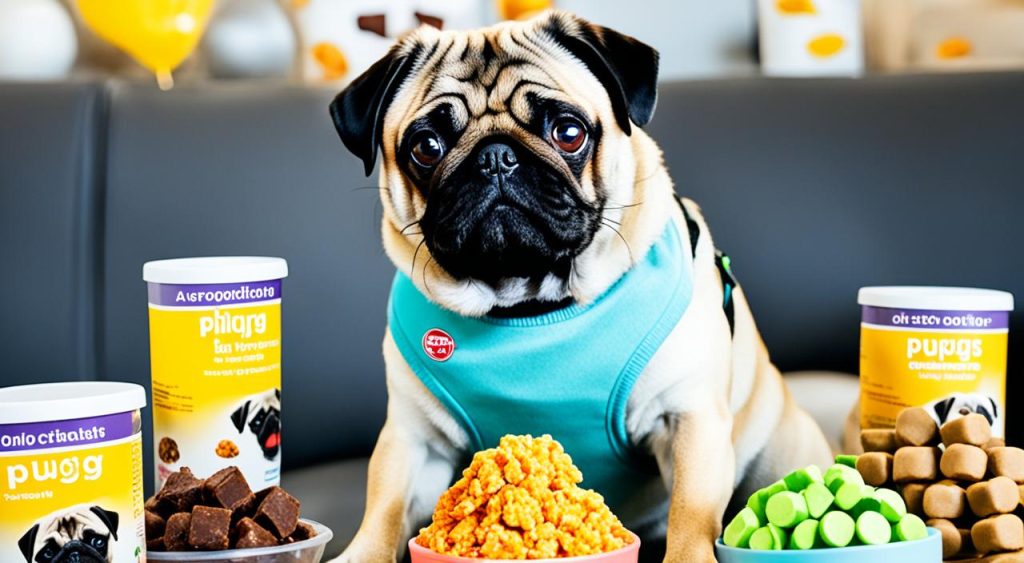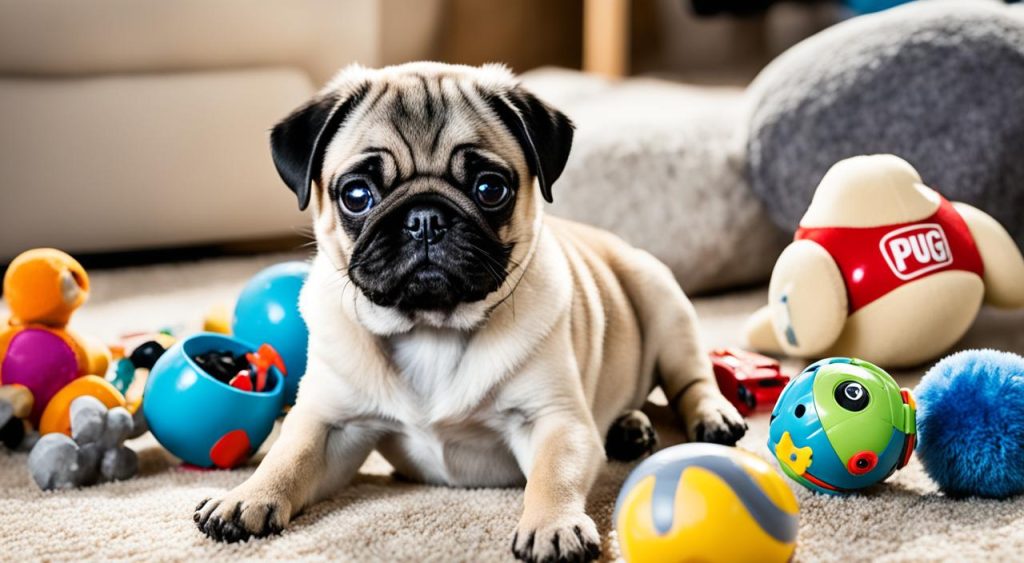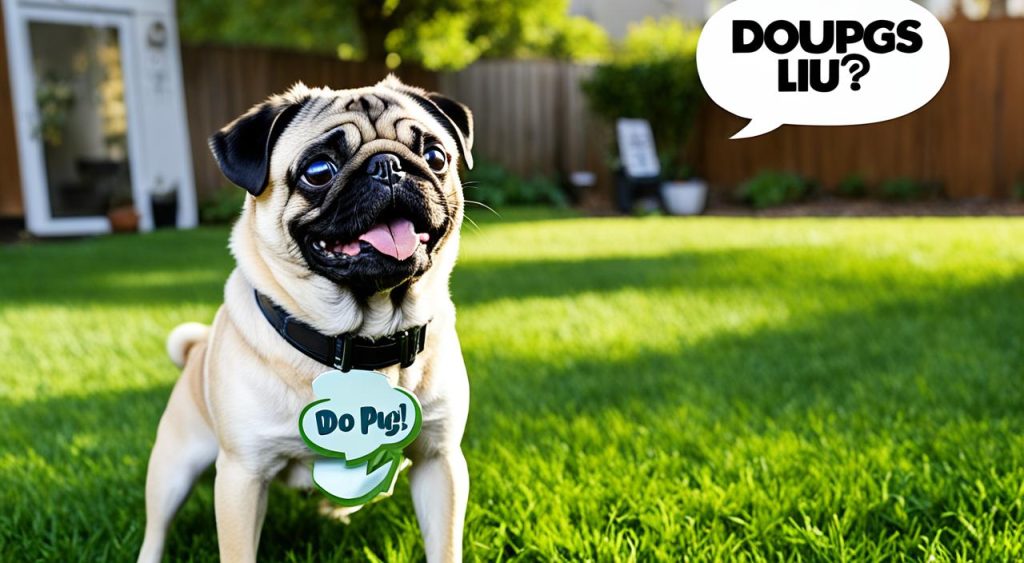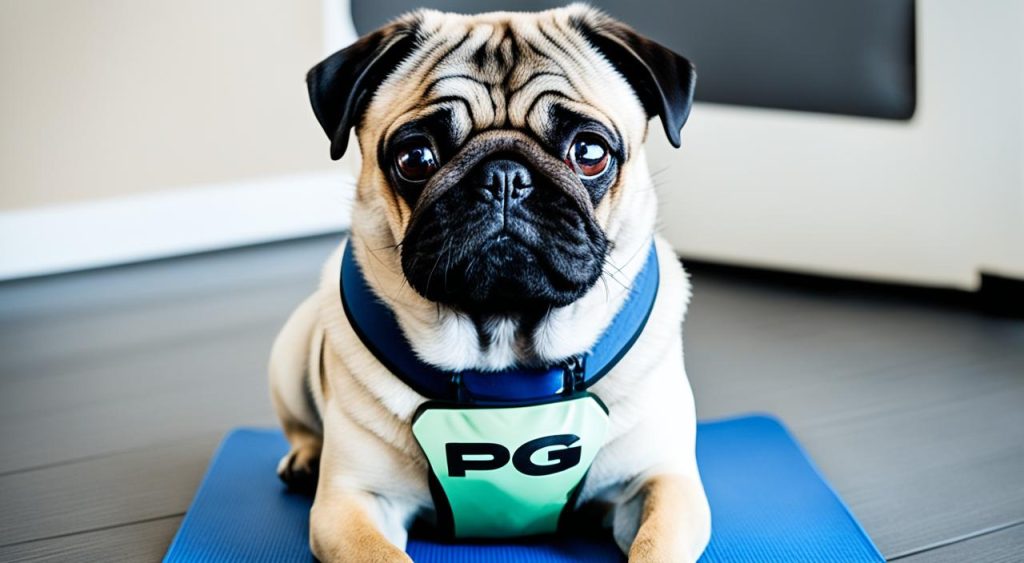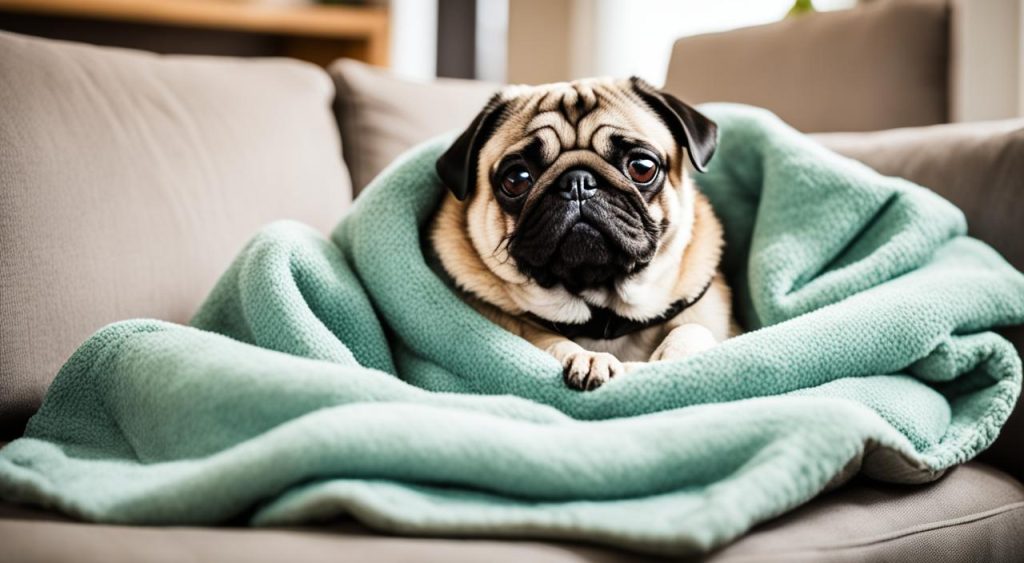Pugs are known for their friendly and fun-loving personalities, making them ideal companions. But are they easy to train? The good news is, with the right approach and consistency, training a Pug can be a rewarding experience. Whether you’re a new Pug owner or looking to improve your training techniques, this article will provide you with valuable tips and insights for successfully training your Pug.
Key Takeaways:
- Pugs have friendly and fun-loving personalities, making them great companions.
- Training a Pug can be easy with a consistent approach and the right techniques.
- Start with teaching your Pug their name, crate training, and house training.
- Introduce grooming and socialization to ensure a well-rounded training experience.
- Use positive reinforcement and treats as motivation during training sessions.
Training Goals for Pug Puppies (8-16 weeks)
When it comes to training your Pug puppy, having specific goals in mind can help you stay focused and achieve success. During this crucial stage of development, it is important to prioritize the following training goals:
1. Teaching them to love their name
Start by repeatedly saying their name in a positive and enthusiastic tone. Use treats and praise to reinforce their positive association with their name. This will form the foundation for future training sessions.
2. Setting a schedule for meals and training
Puppies thrive on routine and predictability. Establish a consistent schedule for feeding times and training sessions. This will promote good behavior and make training more effective.
3. Crate training and house training
Crate training is an essential part of potty training for your Pug puppy. Introduce them to the crate as a safe and comfortable space, and gradually increase the duration of time they spend inside. Additionally, focus on house training by establishing a designated potty area and rewarding them for eliminating in the right place.
4. Introducing grooming
Pugs have specific grooming needs, including regular brushing to maintain their coat and prevent matting. Introduce grooming sessions early on to make it a positive experience for your puppy. Start by gently brushing their fur and rewarding them for calm behavior.
5. Socializing them to other people, places, and experiences
Pug puppies need to be properly socialized to ensure they grow into well-rounded and friendly adult dogs. Expose them to different environments, people, and situations from an early age. Encourage positive interactions and reward them for good behavior in new situations.
Remember, puppies are highly motivated by food treats, so be sure to use tasty rewards as a form of positive reinforcement during training. Celebrate their progress and always provide a loving and supportive environment to help them thrive.
Training Goals for Pug Puppies (16-24 weeks)
As your Pug puppy continues to grow, their training goals will naturally evolve. Around 16 weeks of age, they will be ready to learn basic commands and start participating in puppy classes that focus on positive reinforcement.
During this stage, it is crucial to continue socializing your Pug puppy, exposing them to different people, places, and experiences. This will help them develop confidence and a well-rounded personality.
Introducing them to basic commands like “watch me,” “sit,” “down,” “leave it,” and “come” will further strengthen their obedience and communication skills. These commands are the foundation for a well-behaved and trained Pug.
“Training your Pug puppy to follow basic commands is essential for their safety and your peace of mind. Teaching them to sit and stay when needed can prevent accidents and potential dangers.”
Puppy classes that emphasize positive reinforcement are highly recommended for Pugs in this age range. These classes provide a structured environment where your Pug can interact with other puppies and learn from professional trainers.
Additionally, enrolling your Pug puppy in programs like The AKC S.T.A.R. Puppy program can further enhance their training and socialization. These programs offer guidance and recognition as your Pug progresses in their training journey.
Remember to be patient and consistent in your training efforts. Pug puppies thrive on positive reinforcement, so rewarding them with treats, praise, and affection will motivate and encourage their learning.
By setting training goals that encompass basic commands, socialization, and participation in puppy classes, you are laying the foundation for a well-trained and happy Pug.
Training Goals for Adult Pugs
Training adult Pugs can be a challenge, especially if they have not received proper training in the past. Establishing yourself as the leader and creating a positive and safe environment for your Pug are important first steps in their training journey. Consistency is key when training adult Pugs, as they thrive in a structured environment.
Crate training plays a crucial role in providing adult Pugs with a secure space. Using a crate can help in housebreaking and preventing destructive behaviors, as well as providing them with a comfortable and safe place to retreat to.
Positive reinforcement is a highly effective training method for adult Pugs. They respond well to praise and rewards, which can motivate them to continue learning and behaving appropriately. Treats can serve as a valuable tool in facilitating their training process.
“Consistency is key when training adult Pugs, as they thrive in a structured environment.”
Successful training for adult Pugs relies on consistent and positive interaction. By establishing yourself as the leader, creating a secure environment, and using positive reinforcement, you can help your adult Pug develop good behaviors and become a well-behaved companion.
Behavior Challenges in Adult Pugs
Training adult Pugs can pose certain behavior challenges, particularly for those who have had past experiences or possess certain temperamental traits. It is essential to approach their training with patience and commitment, as it may require additional time and effort to achieve desired results. One must take into consideration their unique background and use positive reinforcement techniques to assist in overcoming these challenges and fostering their confidence.
Consistency and Positive Reinforcement in Training
Consistency is crucial when training your Pug. Dogs are creatures of habit, and having a consistent schedule and training routine will help them learn faster and understand what is expected of them. By providing clear and consistent signals, you can create a training environment that promotes focus and encourages your Pug to learn and respond to commands effectively.
Positive reinforcement is a powerful tool in Pug training. By using praise, treats, and rewards, you can motivate and encourage your Pug to engage in desired behaviors. When your Pug obeys a command or demonstrates good behavior, reward them immediately. This reinforcement helps solidify the connection between the action and the reward, making it more likely that your Pug will continue to exhibit the desired behavior.
By utilizing positive reinforcement, you can make the training process enjoyable for your Pug. They will associate training sessions with positive experiences and rewards, which will increase their motivation and eagerness to learn. Through positive reinforcement, your Pug will become more engaged and responsive during training sessions, making the learning process smoother and more successful.
Remember, training is not just about correction and discipline. It is essential to focus on creating a positive and nurturing training environment for your Pug. By employing consistent training techniques, incorporating positive reinforcement, and providing rewards, you will foster a bond of trust and cooperation with your Pug. With dedication and patience, your Pug will flourish in their training journey and become a well-behaved and happy companion.
Conclusion
Training Pugs is a rewarding experience that can be made easier with patience, consistency, and positive reinforcement. Despite their unique challenges, Pugs are generally eager to please and respond well to training. By using the right techniques and dedicating time and effort, Pugs can become well-behaved companions.
Consistency is key when training Pugs. Establishing a consistent schedule and training routine helps them learn faster and reinforces good behavior. Positive reinforcement, such as praise and treats, is particularly effective in motivating Pugs and making training enjoyable for them.
In conclusion, Pug training can be a positive and enjoyable experience for both you and your furry friend. With the right approach, Pugs can be easy to train and develop good obedience. Remember to be patient, consistent, and use positive reinforcement throughout the training process to achieve the best results.

